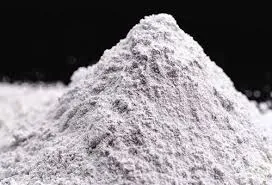
Oct . 18, 2024 05:27 Back to list
High-Quality Hydroxypropyl Methyl Cellulose Manufacturing Process and Benefits
The Role of HPMC (Hydroxypropyl Methyl Cellulose) in Modern Industry
Hydroxypropyl Methyl Cellulose (HPMC) is a versatile polymer that has found its application across a variety of industries, including pharmaceuticals, food, construction, and cosmetics. As a cellulose ether, HPMC is derived from natural cellulose, making it an intriguing compound that combines biological origins with synthetic versatility. This article explores the significance of HPMC, its manufacturing process, applications, and the impact it has on various sectors.
What is HPMC?
HPMC is a non-ionic, water-soluble polymer that is widely used as a thickening agent, emulsifier, binder, and film-forming agent. Its unique properties, such as thermal stability, biocompatibility, and resistance to microbial growth, make it an ideal choice for many applications. HPMC is synthesized by substituting hydroxyl groups in cellulose with hydroxypropyl and methyl groups, which enhances its solubility and functionality.
Manufacturing Process
The production of HPMC involves several key steps. The process begins with the extraction of cellulose from wood pulp or cotton linters. The cellulose is then chemically modified through a series of reactions involving propylene oxide and methyl chloride. This modification introduces hydroxypropyl and methyl groups, resulting in the formation of HPMC.
Quality control is critical in the manufacturing process to ensure that the final product meets industry standards. The degree of substitution (DS) and viscosity of HPMC are key parameters that define its suitability for specific applications. Manufacturers typically use advanced techniques to fine-tune these properties, allowing for the customization of HPMC to meet varying customer needs.
Applications in Various Industries
1. Pharmaceuticals In the pharmaceutical industry, HPMC is widely used as a thickening agent in formulations, helping to stabilize suspensions and emulsions. It is also utilized in drug delivery systems, particularly in extended-release formulations. HPMC can modify the release rate of active ingredients, enhancing bioavailability and therapeutic effectiveness.
hpmc-hydroxypropyl methyl cellulose factory

2. Food Industry HPMC is often employed in the food sector as a food additive. It acts as a viscosity modifier, emulsifier, and stabilizer in a variety of products, including sauces, dressings, and baked goods. Its ability to retain moisture helps enhance the texture and shelf-life of food products, making it a valuable ingredient in many formulations.
3. Construction In the construction industry, HPMC is used as an additive in cement and mortar. It enhances workability, improves adhesion, and increases water retention, which is crucial for the performance and longevity of building materials. Additionally, HPMC's film-forming ability contributes to the strength and durability of construction products.
4. Cosmetics The cosmetic industry benefits from HPMC's thickening and film-forming properties. It is commonly found in lotions, creams, and gels, where it helps improve texture and stability. HPMC also acts as a moisturizing agent, contributing to the overall quality of cosmetic formulations.
Environmental Impact and Sustainability
As industries increasingly focus on sustainability, HPMC stands out as an eco-friendly ingredient. Derived from natural cellulose, it is biodegradable and can be produced with minimal environmental impact. Many manufacturers are adopting sustainable practices in the production of HPMC, such as utilizing renewable resources and minimizing waste.
Furthermore, HPMC's role in enhancing the effectiveness of formulations allows for lower concentrations of active ingredients, which can lead to reduced environmental load. This makes HPMC a promising component in the pursuit of more sustainable industrial practices.
Conclusion
HPMC is a multifaceted compound that plays a critical role in various industries, contributing to innovations in pharmaceuticals, food, construction, and cosmetics. Its unique properties, coupled with sustainable production practices, make it an invaluable asset in modern manufacturing. As research and development continue to evolve, the applications for HPMC are likely to expand, paving the way for more environmentally friendly and effective products across the globe. The HPMC manufacturing sector represents not only a significant economic opportunity but also a critical step towards a more sustainable industrial future.
-
Versatile Hpmc Uses in Different Industries
NewsJun.19,2025
-
Redispersible Powder's Role in Enhancing Durability of Construction Products
NewsJun.19,2025
-
Hydroxyethyl Cellulose Applications Driving Green Industrial Processes
NewsJun.19,2025
-
Exploring Different Redispersible Polymer Powder
NewsJun.19,2025
-
Choosing the Right Mortar Bonding Agent
NewsJun.19,2025
-
Applications and Significance of China Hpmc in Modern Industries
NewsJun.19,2025







